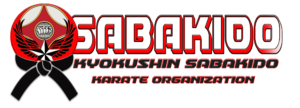Even in Japan, the Technical Syllabus is designed as a guide to help instructors set standards for what level of student is able to perform which techniques, and for the pace at which a dojo introduces them, holds examinations, etc. Accordingly, the Technical Syllabus is not a set of regulations; it is a set ofrecommendations. It is true that if you are a high level student who plans to test in Japan at one of the International Instructors’ Seminars , it would be a good idea for you to be acquainted with the material listed for your level, as well as all the material listed for the levels below it. Kyokushin Sabakido, however, understands that there are many variations to how and when instructors introduce various techniques and skill sets, and that this is part of the inherent innovation in which a style of karate can find improvements. Of course it can also find losses, so it’s up to the individual instructor to pay close attention to the recommended guidelines suggested below, by Honbu, to set the pace of the training in his/her dojo so that his/her students of a given rank, can perform according to an international suggested standard.
A version of the Kyokushin sabakido Technical Syllabus is presented here, but please note the date, 2009. Thy syllabus is regularly updated, but those changes happen in Japanese, and the translation of such a long document often causes the English version to lag behind. As stated above, however, the syllabus is a set of recommended guidelines. Accordingly, even this 2009 version is a good approximation.
Three Judges should be present at Kyu Grading. One of the three must hold 3rd Dan or higher and must be authorized by the Branch Chief (or CR) to conduct the Grading.

